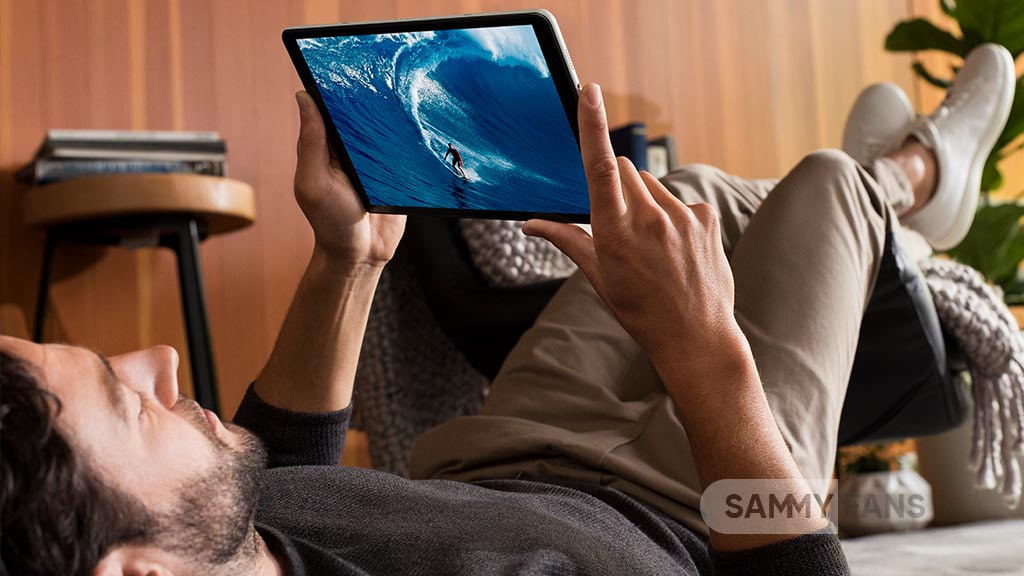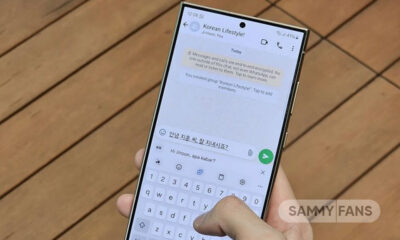Android
Android 16: Baklava marks a new era of naming

In mid-October 2024, Google officially rolled out the stable Android 15 update with several new features. We have already started getting leaks and rumors about what the next version will bring. A recent report has revealed that the codename for Android 16 will be Baklava.
According to reliable tipster @mishaalRahman, Android 16 will be called Baklava. This breaks the usual alphabetical naming pattern, as the previous version, Android 15, was named Vanilla Ice Cream.
For context, Baklava is a delicious layered pastry made of filo dough, filled with chopped nuts, and sweetened with syrup or honey. It is reportedly a sweet name for Android 16.
![]()
Google has a tradition of using fun and creative names for its Android versions, starting with Android 1.5, which was named ‘Cupcake’ back in 2009.
Here are the codenames for the last few Android iterations:
- Android 11 – Red Velvet Cake
- Android 12 – Snow Cone
- Android 13 – Tiramisu
- Android 14 – Upside Down Cake
- Android 15 – Vanilla Ice Cream
- Android 16 – Baklava (reportedly)
While ‘Baklava’ doesn’t follow the alphabetical order, many are curious about names starting with the letter ‘W’ this time. This change in naming reflects how Google is currently developing Android and a new era of naming.
In case you wanted more confirmation that Android 16's code-name will be Baklava, here it is mentioned at the end of a list of every single other Android release's code-name. https://t.co/5ov19MUinK pic.twitter.com/j9mYjIJpvt
— Mishaal Rahman (@MishaalRahman) October 25, 2024
With the introduction of a new project called ‘trunk stable,’ the naming of releases has shifted. For instance, while Android 14 was named Upside Down Cake, its updates began with the letter ‘A’ instead of ‘U.’ This indicates that Google may alter how it names future versions, but the tradition of fun dessert names will continue.
Android
Samsung should learn how to do Android 15 beta testing from OnePlus

Several Android smartphone makers have already started the Android 15 beta program for their eligible devices. However, Samsung hasn’t yet started the Android 15 beta program for the Galaxy smartphones.
OnePlus, the Chinese smartphone maker, has also confirmed the Android 15-based OxygenOS 15 beta program for its compatible devices. OnePlus usually provides a clear schedule detailing when various devices can expect to receive beta updates. According to the latest information, On October 30, OnePlus will start the Android 15-based OxygenOS 15 beta program for the OnePlus 12 series.
Unlike Samsung, OnePlus has an open beta program for global users, that is not a region-limited or exclusive program. With this open beta program, OnePlus collects feedback throughout the program.
I believe Samsung should also adopt a similar beta testing policy. By expanding the beta program worldwide, Samsung would gather extensive feedback, enabling significant enhancements to the One UI software. The company is getting better at telling people when updates will come, but the company could be even clearer and give updates more often.
However, there are also some difficulties. Samsung has a lot of different phones globally, which makes beta testing complicated. Because of the different types of phones, they need to do a lot of testing, which can take longer to get the new software out.
Samsung focuses extensively on creating a unique user experience with One UI, which might prioritize stability over speed in terms of beta and official release timelines.
Samsung takes it slow to make sure all the different phones work well with the new updates, aiming for a reliable experience. On the other hand, OnePlus moves faster, targeting users who don’t mind dealing with some glitches during beta testing.
Android
Two Wear OS clocks could come to Android devices

October 2024 Feature Drop for the Google Pixel Tablet brings some amazing features including two new clock screen savers. These new clocks available in Pixel Tablet are inspired by Wear OS running the Pixel Watch, and they could be released for more Android devices in the future.
Now, users of Pixel Table have even more choices for customizing their screens with the addition of two new clocks. The names of these screensavers are Everyday and Pilot Bold. However, Pixel Tablets already have Eclipse, Prime, Handcraft, and Retro Flip clock designs.
Notably, these two new clocks have arrived with a server-side update with the latest software version 2024.09.23.684094365.2) on the Pixel Tablet.
Two Wear OS-Inspired Clocks
Everyday
The first Wear OS-inspired clock is Everday. It comes with a large two-line clock that shows the time along with the day, date, and weather information.
There are 3 ways alignment options to display this, one has the weather details next to the time, the second shows it in a two-column format, and the third one with weather details below the time. Users can also choose between light and dark themes to suit their preferences.
![]()
Pilot Bold
The second new clock is Pilot Bold, which has a classic analog look. The first layout shows the numbers 3, 6, 9, and 12. The other options position the date and temperature differently around the clock. This adds a stylish and modern touch to the Pixel Tablet.
![]()
Android
Google introduces longevity GRF for 7-Year Android update support, starting with Snapdragon 8 Elite

Google has introduced a program known as Longevity GRF (Google Requirements Freeze) aimed at extending the lifespan of Android device software support, just like the Samsung Galaxy S24 and Google Pixel 8.
With the Longevity GRF program, Google is allowing chipset manufacturers like Qualcomm, starting with the Snapdragon 8 Elite, to support its platforms for up to 7 years of Android updates. It means that devices equipped with the supported chipsets could potentially receive Android OS updates for up to 7 years from the initial release.
This program makes it easy for manufacturers to give longer software updates without always changing the vendor software for each new Android version. The decision is to make longer support for smartphones more common across the Android ecosystem, not just for Google’s devices.
It is not that simple, there are some challenges and limitations too. For instance, some new exclusive features might not be available unless the manufacturer software itself is updated. Also, Google’s commitment to Linux kernel support might limit practical functionality towards the end of those 7 years.
As per the information, the GRF program currently allows for the reuse of vendor software across 3 Android version updates. Under the existing GRF terms, if an OEM wants to go beyond the 3 updates to a fourth, fifth, or up to 7th update, they have to pay the chipset vendor for extended support to update the necessary software. Or, they have to update Chip’s software on their own to keep up with Google’s new requirements for each future update.
READ MORE:
If the Longevity GRF program becomes widely adopted, it could set a new standard for software support. The software support longevity could lead Android devices towards robust hardware, encouraging easier upgrades and maintenance.

For your information, the Google Pixel 8 and Pixel 9 series will receive seven years of software support, which includes Android OS upgrades, security updates, and regular Feature Drops. Similarly, Samsung Galaxy S24 series and Fold6/Flip6 also support up to 7 years of software support.










